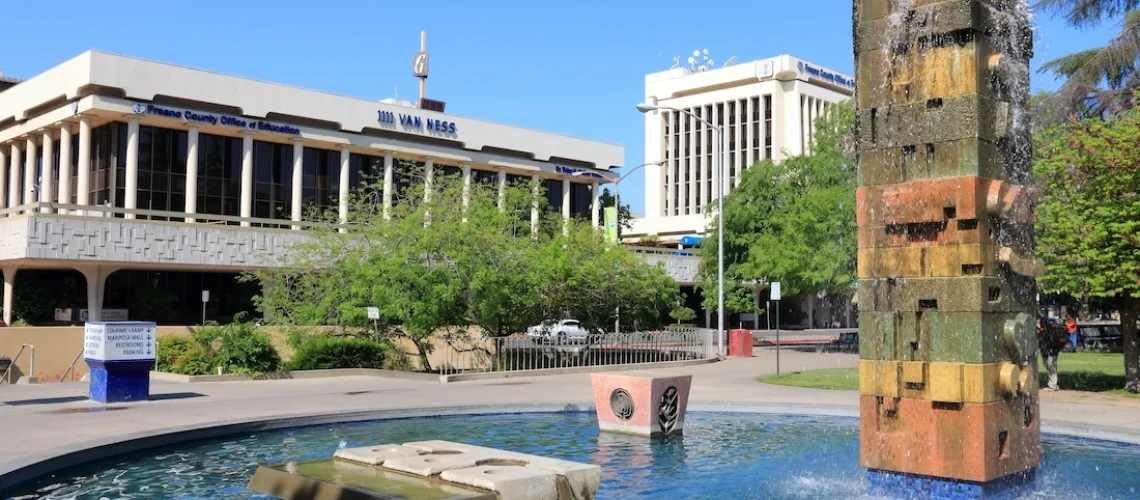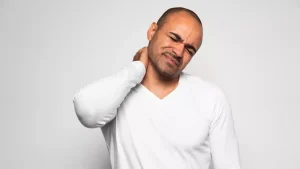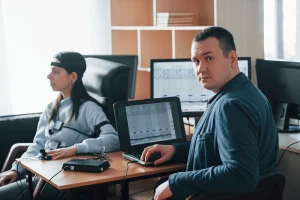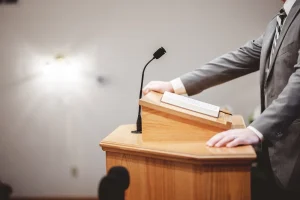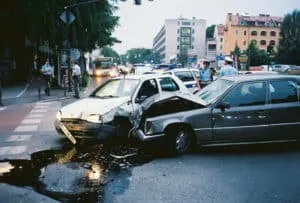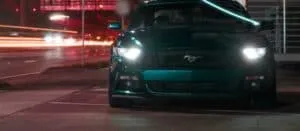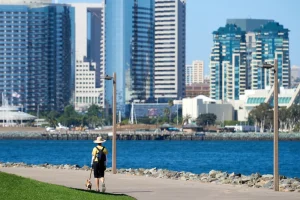Every year, countless pedestrians face dangers on the road, raising alarming concerns about walking safety. In a bustling city like Fresno, where traffic is constant, understanding pedestrian rights and the risks they encounter is crucial. As accidents continue to occur, the safety measures surrounding crosswalks merit closer examination.
In California, pedestrians enjoy certain rights, yet these protections may not always be upheld in practice. Common causes of pedestrian accidents range from distracted and impaired driving to the dangers presented by unmarked crosswalks. These factors contribute to a worrying trend of increasing injuries and fatalities among those on foot.
This article delves into the complex landscape of pedestrian safety in Fresno, exploring the causes and consequences of accidents while providing essential tips for both pedestrians and drivers. A commitment to raising awareness and implementing effective measures can ultimately help create a safer environment for everyone on the road.
Overview of Pedestrian Rights in California
In California, ensuring pedestrians’ safety is a shared responsibility between those on foot and motorists. Under the California Vehicle Code 21950, pedestrians are granted right of way in both marked and unmarked crosswalks. This law serves as an assertive measure to underscore the rights of pedestrians, particularly at intersections where they must be yielded to by drivers.
However, this right of way isn’t absolute. Pedestrians can forfeit their privileged status if they fail to adhere to state laws governing their conduct on roads. Breaking such laws by acting carelessly, like stepping out into the street abruptly or blocking crosswalks, may result in partial liability in the event of an accident.
California’s legislative framework stipulates the following for pedestrians:
- Use of crosswalks at intersections is required.
- Yielding to vehicles when crossing outside of crosswalks is mandatory.
- It is unlawful to obstruct crosswalks.
In essence, pedestrians must navigate with prudence, avoiding any sudden movements that could pose imminent risks to oncoming traffic. Mutual respect and vigilance are key in nurturing a safer environment for all road users.
Common Causes of Pedestrian Accidents
Despite a robust legal framework aimed at protecting pedestrians, the streets of California, and specifically Fresno, have a myriad of factors contributing to pedestrian accidents. Negligent driving remains at the forefront, with drivers overlooking the legal requirement to yield to pedestrians in both marked and unmarked crosswalks. The repercussions are severe; between 2008 and 2017, over 490,000 pedestrians sustained injuries nationwide, with 432 deaths occurring in California alone during the first half of 2018. Pedestrian safety breaches are glaring, with about a quarter of all roadway deaths in the state stemming from pedestrian-related incidents.
A lack of due care by motorists is often to blame for these occurrences, especially at crosswalks or intersections equipped with pedestrian signals. Matters worsen where sidewalks are absent, posing additional hazards and accentuating the need for heightened awareness and adherence to pedestrian rights. Notably, the absence of clearly marked pedestrian pathways does little to alleviate the danger, with negligent drivers failing to afford due care to pedestrians, thus exacerbating the chances of tragic outcomes.
Distracted Driving
Distracted driving is a leading contributor to pedestrian accidents. Engrossing activities like texting, making calls, eating, or even fumbling with in-car entertainment systems can cause a driver to be momentarily blind to the presence of pedestrians, particularly around corners or at crossings. The statistical upswing in pedestrian-vehicle collisions underlines the dire need for constant vigilance. It is imperative for drivers to set aside distractions, perhaps until they’ve safely parked their vehicle, to preserve a keen awareness of their environment and those within it—especially vulnerable pedestrians navigating the streets of Fresno.
Impaired Driving
California’s struggle with impaired driving is also mirrored in Fresno’s pedestrian accident statistics, with DUI arrests peaking in comparison to other states. The gloom that alcohol and drug consumption casts over a driver’s judgment and sensory abilities renders them significantly less-equipped to navigate the roadways safely. Blurred vision and sluggish reaction times impair drivers’ abilities to detect pedestrians, particularly in conditions of low visibility. This, coupled with typical distractions like mobile phone use, is a dangerous cocktail for pedestrian safety. Traffic signals, a cornerstone for orderly conduct on the roads, often go unheeded by impaired drivers, culminating in preventable accidents with pedestrians.
Speeding and Reckless Driving
Speeding and reckless driving have a notorious association with pedestrian injuries and fatalities. California’s dubious distinction as having some of the worst drivers in the US reflects in the frequency and severity of pedestrian accidents due to such behavior. Speeding reduces the window of opportunity drivers have to react and halt their vehicles upon spotting a pedestrian, notably in bustling urban areas. When vehicles collide with pedestrians at high speed, the likelihood of fatal outcomes escalates sharply. Ill-advised driving decisions, be they due to intoxication, exhaustion, or sheer carelessness, are habitual precursors to these types of accidents. In Fresno, an alarming proportion of pedestrian deaths are linked to drivers under the influence, underscoring the lethal potential of reckless driving.
Dangers of Unmarked Crosswalks
Unmarked crosswalks are integral components of urban and suburban infrastructure, facilitating pedestrian movement across roads where formal, marked crosswalks are not present. Despite serving as critical points for crossing, these unmarked crosswalks are devoid of clear, visual markings such as painted lines or pedestrian walking signs, leading to potential confusion for those on foot as well as motorists. Under California law, while pedestrians are granted the right of way in both marked and unmarked crosswalks, safety is not guaranteed by this entitlement alone; caution and vigilance are paramount.
The ambiguity of unmarked crosswalks often leaves drivers unaware of their responsibility to yield, resulting in precarious situations for pedestrians. This obscurity is reflected in Fresno’s traffic incidents, with a significant share of pedestrian-involved fatalities highlighting the perils of crossings that lack definition. Furthermore, California’s alarming 26% uptick in fatal pedestrian accidents over five years spotlights the additional risks associated with unmarked crosswalks, pushing for a crucial reassessment of pedestrian infrastructure and safety measures.
Legal Implications of Unmarked Crosswalks
Navigating the legal context of unmarked crosswalks is essential for both pedestrians and drivers in understanding their rights and duties. As delineated in California Vehicle Code 21950, despite their lack of visible markings, unmarked crosswalks are legally protected zones where pedestrians have the right of way. Consequently, drivers are legally obliged to yield to crossing pedestrians. However, the sparse nature of physical cues at these crossings can sow confusion and misinterpretation regarding pedestrian rights.
Pedestrians must bear in mind their own responsibility to not recklessly step into traffic, as sudden movements can create perilous scenarios with vehicles that may be incapable of stopping promptly. Moreover, the drivers’ unfamiliarity with the positioning of unmarked crosswalks often contributes to their failure to observe legal mandates, escalating the potential for accidents and injuries. The intersection of pedestrians’ legal rights and the duty of care required by both pedestrians and drivers forms the basis for safety within these indiscernible yet legally sanctioned pathways.
How Unmarked Crosswalks Increase Accident Risk
The inherent lack of conspicuous signage or pavement markings at unmarked crosswalks intensifies the risk of collisions between pedestrians and vehicles. This absence of visual signals can cause drivers to overlook their obligation to yield, vastly increasing the chance of an accident. While California law seeks to provide security for pedestrians in both marked and unmarked crosswalks, the practical implications of these unmarked zones call for heightened attention and prudence from all road users.
Pedestrians are advised to employ a greater level of care when crossing, avoiding unpredictable movements that might catch drivers off guard. The notable rise in pedestrian fatalities and injuries in California between 2008 and 2017 serves as a grim reminder of the inherent dangers associated with pedestrian crossings, unmarked ones particularly. When drivers neglect to acknowledge the right-of-way in these unmarked crossings, the incident rate of pedestrian mishaps climbs, underscoring the importance of driver education and pedestrian awareness in reducing risks at these unmarked yet vital junctures.
As we consider the accident risk associated with unmarked crosswalks, it’s crucial for both drivers and pedestrians to understand their respective roles in maintaining safety. For drivers, this means constant vigilance and compliance with pedestrian right-of-way laws. For pedestrians, it signifies using crossings with caution and making oneself as visible as possible to oncoming traffic. Consequently, a collective effort is required to minimize accidents and ensure the well-being of all road users, particularly in the unmarked crosswalks of Fresno and beyond.
Statistics on Pedestrian Accidents in Fresno
The city of Fresno has experienced a distressing trend in pedestrian safety, as evidenced by the statistics on pedestrian accidents. In 2018 alone, Fresno tragically witnessed 30 pedestrian fatalities within its traffic accidents. Reflecting a nationwide concern, urban pedestrian fatalities have spiked by 70% across the U.S. over the past decade, and Fresno is no exception to this upward trend.
A significant factor contributing to these accidents is distracted driving, often linked to the use of smartphones, which has become a widespread issue. Additionally, driver intoxication has been a major concern, with nearly two-thirds of Fresno’s pedestrian deaths in 2018 involving an intoxicated driver.
The severity of the situation is highlighted in Smart Growth America’s 2021 “Deadly By Design” study, which ranks Fresno as the 21st most dangerous city for pedestrians out of the entire United States. Between 2010 and 2019, Fresno reported 235 pedestrian fatalities, suggesting a dire need for improved pedestrian safety measures.
In light of these statistics, pedestrian safety remains a pressing issue for Fresno residents and authorities alike, underscoring the importance of awareness, enforcement, and possibly infrastructural improvements to protect pedestrians citywide.
Frequently Sustained Injuries in Pedestrian Accidents
Pedestrian accidents often result in catastrophic injuries to those on foot due to the sheer lack of protection against the force of an oncoming vehicle. These injuries range from mild to severe and frequently include spine injuries and shoulder injuries, both of which testify to the violent nature of such collisions. Brain injuries are also common and can be life-altering. Whiplash and neck injuries are prevalent, often due to the abrupt and forceful impact. Despite commonly being associated with vehicle occupants, pedestrians are equally at risk.
Fractures and broken bones are agonizingly routine in these instances, highlighting the vulnerability pedestrians face, as they lack the same safety features—such as seatbelts and airbags—that vehicle occupants might rely on. Internal bleeding represents another potent danger. This invisible threat may not be immediately apparent but requires urgent medical attention to prevent dire consequences. Moreover, cuts and lacerations can occur from contact with a vehicle or secondary impact with the ground or other roadside objects, leading to excessive blood loss and additional risk of complications.
Common Types of Injuries
Pedestrian accidents are often typified by injuries to the musculoskeletal system, which encompasses damage to bones, muscles, ligaments, and nerves and may inflict chronic pain. Traumatic Brain Injury (TBI) is one of the more severe outcomes, potentially resulting in long-term cognitive and neurological impairments. Even a concussion, though it is a milder form of TBI, can be enough to disrupt a pedestrian’s daily life—impacting their capacity to fulfill work duties or even impairing their ability to drive.
Broken bones in these scenarios are not merely painful events; they necessitate a lengthy recovery process that often includes physical therapy or rehabilitation, adding to the victim’s trauma. The severity of a pedestrian’s injuries can be heavily influenced by factors such as the vehicle’s speed and angle of impact during the collision, which underscores the heterogeneous nature of these incidents.
Long-term Impacts of Pedestrian Injuries
The long-term effects of injuries sustained in pedestrian accidents can be harrowing, as they tend to induce a cascade of repercussions that can pervade every aspect of a victim’s life. Broken bones may demand surgical procedures and extended periods of immobility, resulting in persistent physical limitations and frequently demanding prolonged medical care.
Severe injuries like those to the spine and brain can have a profound influence on a pedestrian’s quality of life, often necessitating ongoing support and adaptations for day-to-day living. It is notable that the likelihood and severity of pedestrian injuries are amplified by the vehicle’s speed at the time of impact—faster speeds generally equal more severe injuries with long-lasting consequences.
Older individuals, particularly those over 50 in California, are at a heightened risk of fatal consequences from pedestrian accidents, which underscores the need for proactive safety measures to protect this demographic. Furthermore, the aftermath of these tragic events typically entails continuous medical costs—such as for treatment, ongoing physical therapy, and rehabilitation. This not only inflicts a psychological toll on victims and their loved ones but also places a significant financial strain on families, exacerbating the overall impact of pedestrian accidents in Fresno and beyond.
Safety Tips for Pedestrians
When it comes to pedestrian safety, a proactive approach can make all the difference. Sidewalks are a critical feature as they provide a separate pathway from vehicles, reducing the risk of accidents. If sidewalks are available, they should always be the first choice for pedestrians. In cases where sidewalks aren’t present, pedestrians should walk facing traffic, while keeping to the left side of the road. This not only improves visibility for the pedestrians but also for the drivers who can see them from a distance. Additionally, wearing reflective clothing after dark is a simple yet effective method to stand out to drivers.
Another crucial aspect of pedestrian safety is the use of crosswalks. At marked crosswalks, traffic signals often control the flow of both vehicular and foot traffic, offering pedestrians a higher degree of safety. In contrast, unmarked or faded crosswalks demand extra vigilance due to lower visibility and recognition from drivers. Furthermore, staying alert and minimizing distractions—like refraining from using headphones—can aid pedestrians in responding quickly to any imminent dangers. Here’s a quick list of strategies for pedestrians to remain safe:
- Utilize sidewalks whenever available.
- If no sidewalk, walk facing traffic on the left side of the road.
- Wear reflective clothing at night for better visibility.
- Always cross at marked crosswalks when possible.
- Stay alert and minimize distractions to stay aware of potential hazards.
Awareness and Visibility Techniques
Visibility plays a vital role in preventing pedestrian accidents, especially during low-light conditions when pedestrians are harder to spot. Clothing with reflective elements can catch the headlights of oncoming vehicles, signaling the presence of a pedestrian. Avoiding impairment by alcohol or drugs is another non-negotiable practice, as such substances compromise one’s ability to make safe judgments and move with coordination.
Employing awareness techniques is also key; these include using pedestrian crossings and staying especially cautious at unmarked or faded crosswalks. Ensuring that you use designated crossing points can make you predictable to drivers, reducing the chances of accidents. Ditching distractions like music or phone usage can keep your mind on the surrounding environment, allowing you to navigate safely and notice any potential dangers swiftly.
Ideal Walking Practices
Adhering to ideal walking practices is essential for personal safety. Pedestrians are urged to use sidewalks or designated pathways which are purposefully constructed to keep pedestrians safe from vehicular pathways. When sidewalks are absent, California law advises pedestrians to stick close to the left-hand edge of the roadway, enhancing their visibility to drivers. Don’t underestimate the power of reflective clothing; it’s an easy addition to nighttime walking attire that significantly increases visibility.
Moreover, making use of marked crosswalks is always recommended. These are thoughtfully placed to safeguard pedestrians and to direct them along the safest routes across roadways. To maintain heightened awareness, it’s advised to reduce any engaging distractions, which can be as simple as not listening to music while walking. By staying observant, a pedestrian can be more aware of their surroundings, which is crucial for detecting and reacting to any potential hazards.
The key to pedestrian safety lies in taking conscious steps towards visibility and awareness, as outlined by these practices:
- Always opt for sidewalks or designated pathways.
- When sidewalks are not available, walk facing traffic on the left side of the road.
- Nighttime visibility should be enhanced with reflective clothing.
- Use marked crosswalks wherever available.
- Maintain awareness by avoiding distractions such as music or phone use.
These simple yet effective practices can greatly improve the safety of pedestrians on the road.
Safety Tips for Drivers
Drivers have a crucial role to play in the prevention of pedestrian accidents. Awareness is key; motorists should always be on the lookout for pedestrians, whether or not they are in a crosswalk. Vigilance in scanning the surroundings for pedestrians can significantly reduce the risk of accidents.
It’s equally important for drivers to reduce their speed and be ready to stop when approaching and turning into crosswalks. A slower pace gives drivers more time to notice and react to pedestrians who may step into the roadway.
Poor visibility conditions, including inclement weather or dusk and dawn, demand heightened caution. Drivers should adjust their speed accordingly and ensure their vehicle’s headlights and windshield wipers are functioning effectively to enhance visibility.
A vehicle stopped at a crosswalk could be an indicator that pedestrians are crossing; passing these vehicles is risky as it can create a blind spot. A pedestrian hidden from your view could be in the path of your vehicle, leading to disastrous consequences.
Backing up poses its own set of challenges, as pedestrians can be difficult to spot, particularly for drivers of larger vehicles. Before reversing, take the time to check mirrors and blind spots carefully for any indication of pedestrians moving into the path of your vehicle.
| Safety Tip | Rationale |
|---|---|
Look for pedestrians at all times | Prevents accidents by increasing vigilance |
Slow down when approaching crosswalks | Gives more time to notice and react to pedestrians |
Exercise extra caution in poor visibility | Enhances the driver’s ability to see pedestrians |
Don’t pass stopped vehicles at crosswalks | Avoids the danger of hidden pedestrians crossing |
Check surroundings when backing up | Prevents back-over accidents with pedestrians |
Responsible driving is about anticipation and respect for all roadway users, especially the most vulnerable among us—pedestrians. By adhering to these safety tips, drivers can play a substantial part in keeping the roads of Fresno safe for everyone.
Understanding Pedestrian Right-of-Way
Under California law, pedestrians are afforded the right of way in both marked and unmarked crosswalks, which imposes a legal obligation on drivers to yield to them. This aspect of road safety is crucial and often misunderstood, leading to dangerous situations and accidents.
The California Vehicle Code VC 21950(a) makes it clear: drivers must yield to pedestrians crossing in any crosswalk. Yet yielding goes beyond merely not hitting a pedestrian; drivers must genuinely give precedence to crossing pedestrians, allowing them to pass safely without intimidation or pressure.
Although pedestrians do have this right of way, they are also expected to take reasonable care when entering traffic. Reckless behavior, such as dashing into the road heedlessly, is not protected by law, and everyone must contribute to safety on the streets.
Specifically, under VC 21954, pedestrians must yield the right of way to vehicles when crossing roads at any point other than a marked or unmarked crosswalk if the vehicles are so close as to present an immediate hazard. It’s a mutual responsibility scenario—drivers must be vigilant, and pedestrians must be prudent.
California also goes a step further in ensuring legal protections for blind pedestrians, who may not be able to see or react to oncoming traffic. When an individual using a white cane or accompanied by a service dog is attempting to cross, drivers must not only yield but also take all necessary precautions to avoid causing harm.
| Right-of-Way Fact | Driver’s Responsibility |
|---|---|
Right of way in marked/unmarked crosswalks | Yield and allow safe crossing |
VC 21950(a) mandates vehicle yielding | Legal requirement to prioritize pedestrian safety |
Pedestrians cannot create immediate hazards | Drive cautiously and be prepared to stop |
Pedestrians yield to close hazards | Be watchful for pedestrians who may yield to you |
Special protections for blind pedestrians | Yield and exercise utmost care |
Educating both drivers and pedestrians about these right-of-way laws can lead to more respectful interactions and safer streets.
Defensive Driving Tips
Defensive driving entails a set of skills that reduces the dangers associated with driving by anticipating potential hazards and being prepared to deal with them. This becomes especially crucial in areas with heavy pedestrian traffic.
Constant vigilance is the cornerstone of defensive driving. Always be prepared to spot pedestrians in and out of crosswalks and adjust your driving to accommodate their safe passage. When approaching areas with heavy foot traffic, such as schools or shopping districts, extra vigilance is needed.
Drivers need to be particularly cautious in poor visibility conditions. Whether due to weather, the time of day, or any environmental factor, poor visibility conditions necessitate a slower speed and heightened awareness of potential pedestrian movement.
Stopping a safe distance away from crosswalks when pedestrians are present is a good practice. This not only allows the pedestrians to safely cross but also signals to other drivers the presence of crosswalk users and reduces the likelihood of accidents.
It might seem obvious, but it bears repeating: never overtake vehicles stopped at a pedestrian crossing. They may be yielding to someone you can’t see. Treat every stationary vehicle at a crosswalk as if it is a sign indicating potential pedestrian crossing.
Lastly, always exercise caution when reversing. Before you start to back up, mentally note the space around your vehicle and remain alert to changes. Even if you’re in a hurry, it’s better to take a few extra seconds to ensure safety than to risk a collision with a pedestrian.
| Defensive Tip | Purpose |
|---|---|
Pedestrian vigilance | Avoid accidents by anticipating pedestrian movement |
Slow down, especially in poor visibility | Increases reaction time and pedestrian safety |
Stop at a distance from crosswalks | Improves visibility for other drivers and pedestrians |
Do not overtake at crosswalks | Prevents collisions with unseen pedestrians |
Exercise extra caution when reversing | Prevents back-over incidents involving pedestrians |
Adherence to these defensive driving tips can be life-saving, ensuring that drivers contribute to a safer environment for pedestrians in Fresno and beyond.
What to Do After a Pedestrian Accident
In the unfortunate event of a pedestrian accident, it is crucial to know the steps to take immediately following the incident. These steps not only ensure your well-being but also preserve your rights, especially when it comes to seeking compensation for any damages or injuries incurred. One of the first steps should be to consider hiring a pedestrian accident lawyer. These legal professionals specialize in representing those injured in pedestrian accidents and can guide you through the complex process of filing a personal injury claim against the at-fault driver. An attorney can thoroughly review your medical records, and construct a compelling case on your behalf, which is particularly important as insurance companies may attempt to minimize their payout. Engaging a personal injury attorney early gives you leverage against insurers and can prevent you from accepting underpayment for your claim. Moreover, many pedestrian accident attorneys operate on a contingency fee basis, meaning that you won’t have to pay attorney fees unless they are successful in recovering compensation on your behalf, alleviating financial stress as you recover from your injuries.
Immediately After the Accident
Following a pedestrian accident, it’s critical to remain composed and to guard your statements about fault or injury severity, as these comments can complicate insurance claims. Seek medical attention right away, even if injuries seem minor, as they could exacerbate or only become apparent with time. At the scene, if able, collect contact information from witnesses, as their testimonies can be invaluable to your case. Moreover, try to take photographs of the site of the accident, paying particular attention to traffic signals, signs, or any other relevant details that could serve as evidence. Ensuring you follow medical advice and attend all subsequent appointments is key; your medical treatment record is a vital piece of evidence that insurance companies will consider when evaluating your claim.
Seeking Medical Attention
The importance of seeking immediate medical attention cannot be overstressed. Pedestrians may suffer injuries that are not immediately apparent, such as head injuries, which can manifest symptoms long after the accident occurs. Emergency room visits and subsequent medical records are paramount as they stand as concrete evidence in your legal case and personal injury claim. Maintain a detailed account of all prescriptions, treatments, and medical expenses since these will be integral to the computation of financial compensation. A thorough medical examination will ensure a full assessment of your injuries, including those that may develop later, providing crucial documentation for your claim.
Documenting the Incident
Efficiently documenting the accident is a vital step that should not be overlooked. Make sure to obtain a copy of the police report—it often contains information imperative to your claim. Exchange and note down comprehensive contact information from the driver involved, including their insurance details and vehicle registration number. Establish a solid base of witness testimonials by collecting their contact information. Photographic evidence of your injuries, the accident scene, and any traffic signals or signs at the location is important for substantiating your claims. It is also advisable to write down your own detailed account of the incident as soon as possible, as your memory of the events will be crucial when recounting the accident to both your attorney and insurance companies.
Importance of Legal Representation
The repercussions of pedestrian accidents can be severe and life-altering, underscoring the importance of securing legal representation. A pedestrian accident attorney has the expertise to aid victims in recovering compensation for losses incurred, ranging from medical expenses to loss of income and pain and suffering. Immediate consultation with a personal injury attorney after an accident is instrumental in protecting your rights and maximizing the potential for a favorable compensation outcome. California law may provide specific protections for pedestrians, but strategic legal assistance is typically necessary to establish the negligence of the fault driver effectively. In cases where severe injuries are sustained, such as limb amputation, a skilled legal expert can be indispensable in securing comprehensive compensation for long-term care and related expenses.
Advocating for Greater Pedestrian Safety
In conclusion, the alarming rise in pedestrian fatalities, particularly in urban areas like Fresno, signals an urgent need to advocate for greater pedestrian safety. Disturbingly, 30 pedestrians lost their lives in traffic incidents in Fresno in 2018, with a significant proportion involving impaired driving. Despite California’s legal stipulations that demand drivers yield to pedestrians in crosswalks, both marked and unmarked, negligent drivers continue to threaten pedestrian safety. Distracted driving, driven by the widespread use of smartphones, only exacerbates the risks for those on foot.
Considering that pedestrian accidents account for a quarter of all roadway deaths in the state, there’s a compelling call to action. Improved traffic signals, more visible pedestrian crossings, stringent enforcement of driving laws, and public awareness campaigns are essential. As individuals and communities, we must emphasize the importance of giving due care to pedestrians and insist on holding the party responsible for accidents accountable. Insurance companies, personal injury attorneys, and pedestrian accident lawyers play a critical role in advocating for victims, aiming to secure just financial compensation for medical expenses and property damage. To truly keep pedestrians safe and reduce pedestrian accident injuries, it is imperative for all parties—from drivers to lawmakers—to unite in prioritizing pedestrian well-being on our streets.
For Help Call
For Help Call
If you have been involved in a pedestrian accident in Fresno or have questions regarding your rights and potential compensation, assistance is readily available. The Fresno Law Offices of Phoong Law are adept at navigating the complexities of pedestrian accident cases. With a focus on pedestrian safety and the rights of the injured, they provide expert legal counsel and support to secure the justice and financial compensation victims deserve.
Contact Information:
- Phone: 866-GOT-PAIN
- Services: Legal advice, personal injury claims management, insurance negotiation
- Expertise: Pedestrian accident injuries, fault determination, financial recovery
Remember, navigating the aftermath of a pedestrian accident involves dealing with insurance companies, medical expenses, and potential property damage. A skilled pedestrian accident attorney will fight for your rights, aiming to recover costs for medical attention and ensure you’re not unfairly burdened by the actions of negligent drivers.
If you’re an injured pedestrian or a loved one seeking advice after an accident, don’t hesitate. Reach out to the trusted team at Phoong Law for a consultation and let them provide the guidance you need in these challenging times.
Disclaimer: The content of this blog post is intended for general informational purposes only and does not constitute legal advice. Pedestrian accident cases can be complex, and each situation is unique. For specific legal guidance regarding your rights and options after a pedestrian accident, please consult with a qualified attorney. Phoong Law is not responsible for any actions taken based on the information provided in this post.



